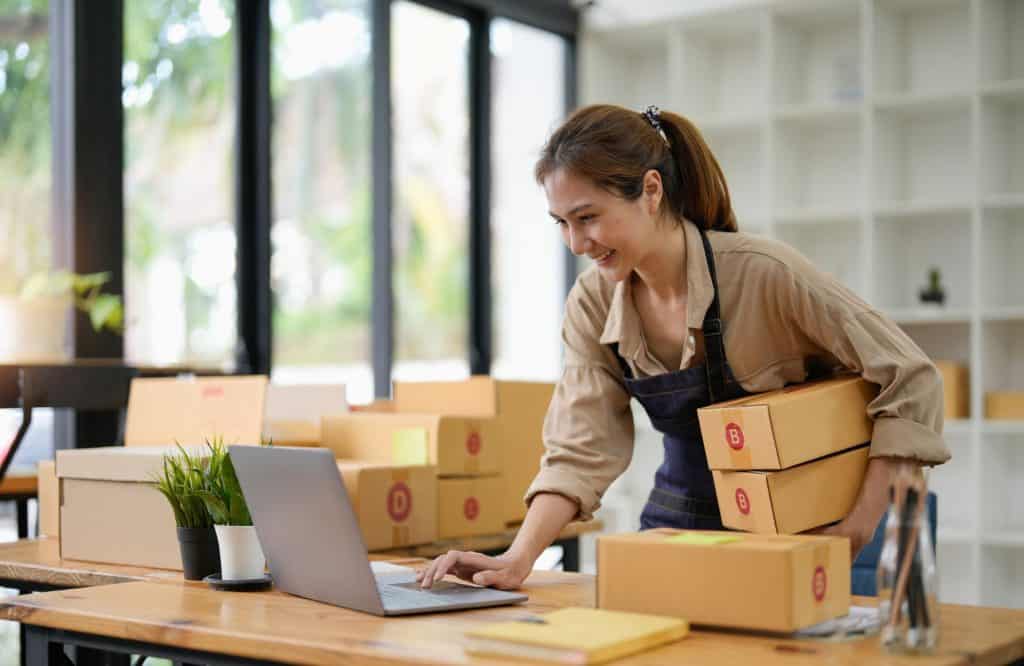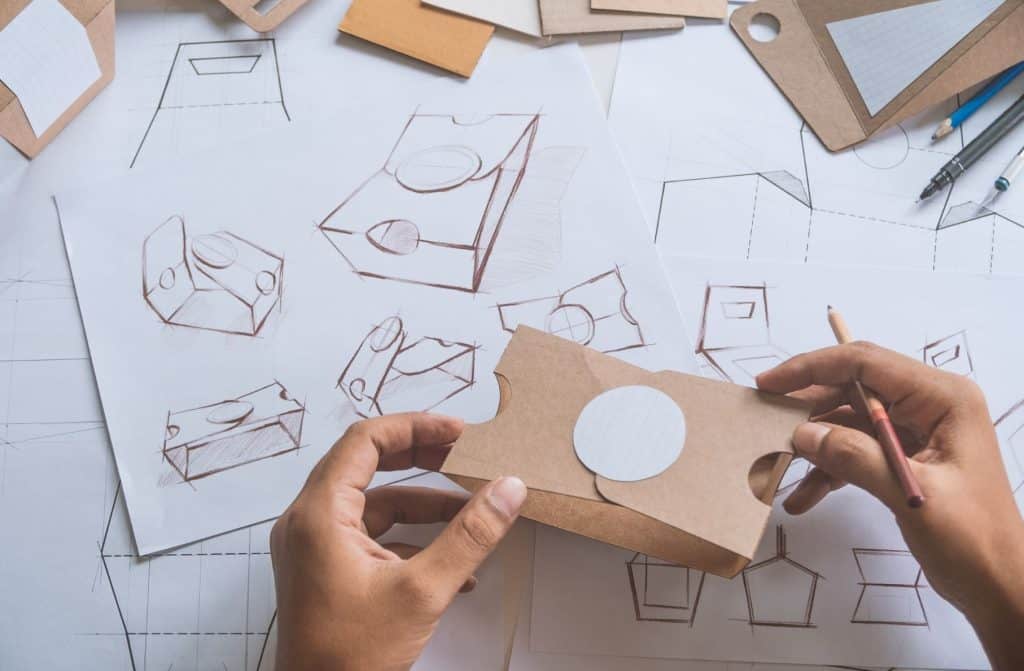Are you overwhelmed with the process of designing, printing, and delivering your product packaging? Fear not! With this comprehensive guide to streamlining your product package workflow from design to delivery, you can make sure that nothing falls through the cracks during your production process. Whether you’re a newbie in the business or an experienced professional looking for some streamlined strategies, we have got your back. Read on to find out how breaking up each step into manageable pieces can cut costs and ensure quality every time!
Defining Your Brand Identity
Your brand identity is more than just a logo or slogan. It’s the overall personality of your business – the who, what, and why – that sets you apart from the competition. Defining your brand identity is the first step in creating a packaging design that resonates with your target audience. Your packaging should not only be aesthetically pleasing but also communicate the purpose and values of your brand. Is your brand all about sustainability?
Make sure your packaging is eco-friendly and shouts it from the rooftops. Are you selling luxury products? Your packaging should exude sophistication and style. Remember, the packaging is more than just a way to deliver your product – it’s also an opportunity to connect with your customers and build brand loyalty.
Choosing the Right Materials for Your Product Packaging
When it comes to creating the perfect product packaging, choosing the right materials is crucial. Not only do your materials need to protect your product during shipping and handling, but they also need to be visually appealing and sustainable. A variety of options are available, ranging from traditional materials like cardboard and plastic to eco-friendly alternatives like biodegradable or compostable options.
By taking the time to research and select the best materials for your product, you can ensure that it stands out on the shelves while also reducing your environmental impact. So, whether you're launching a new product or revamping your existing packaging, make sure you give careful consideration to your material choice.
Choosing the Right Label Machinery
Once you have your packaging design and materials sorted out, it’s time to focus on the labeling process. Choosing reliable label machinery is essential for ensuring that your labels are printed accurately and efficiently, without any costly errors or delays. When selecting label machinery, consider factors like the speed and accuracy of the equipment, as well as the compatibility with your packaging materials. It’s also important to consider the maintenance and repair requirements of the machinery, to avoid unexpected downtime during production. By investing in reliable label machinery, you can streamline your labeling process and ensure that your products are labeled accurately and efficiently every time.
Designing a Label that Stands Out from the Crowd
In a world where consumers are bombarded with products on a daily basis, it's crucial to design a label that stands out from the crowd. A well-designed label can be the difference between a product that flies off the shelves and one that collects dust. But how do you create a label that catches the eye? One approach is to focus on the use of color, typography, and imagery.
A bold color scheme can make your product pop, while carefully chosen typography can communicate your brand's personality. And don't forget about the importance of imagery. A compelling image can convey what your product is all about at a glance. With a little creativity and attention to detail, your label can be the one that stands out from the pack.

Developing an Effective Fulfillment Process to Ensure On-time Delivery
In today's fast-paced world, on-time delivery is crucial for any business. Therefore, developing an effective fulfillment process is essential to ensure your customers receive their orders on time. From managing inventory to predicting demand, the process must be efficient and streamlined to avoid delays. An effective fulfillment process not only ensures customer satisfaction but also saves valuable time and resources, allowing you to focus on growing your business. With the help of technology and proper planning, companies can create a fulfilling experience for their customers, from the moment the order is placed to when it arrives at their doorstep.
Creating a Quality Control Plan to Ensure Consistency
Once you have designed and produced your product packaging, it's essential to ensure that every package that goes out the door meets your quality standards. This is where a quality control plan comes in. By implementing a rigorous quality control process, you can catch and address any issues before they reach your customers. This can include measures like inspecting each package for visual defects or verifying that the correct label has been applied. A quality control plan not only ensures that your product packaging meets your standards, but it also helps build trust with your customers by showing them that you take the quality of your product seriously.
The Benefits of Choosing Customized Shipping Solutions
In the world of e-commerce, shipping is a vital part of the customer experience. It can be the determining factor of whether a customer returns to buy from you or not. That's why investing time in finding a customized shipping solution that satisfies your business needs is crucial. Customized shipping solutions can provide flexibility, reduce costs, and increase customer satisfaction. The ability to choose your carrier, delivery time, and packaging can help to optimize your shipping process and manage your resources better. By adopting a tailored shipping solution, you can achieve happy customers and ultimately, increase sales.
Creating a Prototype to Test Your Product Packaging
Before launching your product packaging, it’s crucial to create a prototype to test and refine your design. A prototype can help you identify any design flaws or functionality issues that need to be addressed before you go to production. It also allows you to get feedback from potential customers and make necessary adjustments. Creating a prototype doesn’t have to be a complicated process. You can start with a simple mock-up using paper and cardboard or invest in a more sophisticated 3D printing technology to create a more detailed model. By creating a prototype, you can save time and money by avoiding costly mistakes during production.
Additionally, a prototype can also help you identify opportunities for cost savings and process optimization. By physically testing your prototype, you can determine the most efficient way to package your product, minimizing material waste and reducing shipping costs. A well-designed prototype can also help you identify areas where you can automate or streamline your packaging process, reducing labor costs and improving overall efficiency.
Sustainable Packaging: The Future of Product Packaging
Sustainable packaging is a hot topic in the world of product packaging, and for a good reason. As consumers become increasingly environmentally conscious, it's essential for businesses to take steps to reduce their environmental impact. One area where companies can make a big difference is in their product packaging. By choosing eco-friendly materials, reducing waste, and implementing sustainable practices throughout the production process, businesses can reduce their carbon footprint and appeal to customers who prioritize sustainability.
Additionally, showcasing your commitment to sustainability on your packaging can also help to build brand loyalty and attract new customers who share your values. By taking the time to consider the environmental impact of your packaging and implementing sustainable solutions, you can create a more environmentally responsible and socially conscious business.
Sustainable packaging options include materials that are biodegradable, compostable, or made from recycled materials. In addition to materials, sustainable packaging also involves reducing waste, optimizing package sizes, and using efficient manufacturing processes. By adopting sustainable packaging practices, you can show your commitment to environmental responsibility and meet the growing demand for eco-friendly options.
Managing Your Packaging Supply Chain
When it comes to product packaging, it's not just about what's on the outside of the box. It's also about the complex supply chain that goes into producing and delivering that packaging. From sourcing raw materials to coordinating with multiple vendors, managing your packaging supply chain can be a daunting task. However, by implementing efficient processes and working closely with your suppliers, you can streamline your supply chain and ensure that your packaging arrives on time and on budget.
This can include measures like forecasting demand, optimizing inventory levels, and establishing strong relationships with your suppliers. By managing your packaging supply chain effectively, you can ensure that your product packaging is delivered seamlessly, every time.
As experts in the field continually emphasize, proper product packaging can make or break the success of your products. From establishing a unique brand identity, selecting environmentally-friendly materials, and designing attractive labels to create instant consumer recognition to customized shipping solutions – each component of your packaging workflow matters. In this guide, we’ve distilled professional expertise into the key points to streamline your product packaging.
Whether you manufacture beauty products, electronic devices or any other type of consumer goods, following these steps will help you deliver ready-to-sell and hassle-free packages without fail. There is no “one size fits all” solution when it comes to creating the perfect package for your products – but keep the principles in mind and experiment until you come up with a sequence that meets both your budget constraints and customers' expectations.
FAQs
How important is product packaging?
A: Product packaging is incredibly important as it not only protects your product but also serves as a key marketing tool. A well-designed and thought-out package can grab customers' attention and communicate the purpose and values of your brand.
What materials should I use for my product packaging?
A: The materials you choose for your product packaging will depend on several factors, including the type of product you're selling, your budget, and your brand values. Some popular options include cardboard, plastic, biodegradable, and compostable materials.
How can I create a label that stands out?
A: To create a label that stands out, focus on the use of color, typography, and imagery. A bold color scheme can make your product pop, while carefully chosen typography can communicate your brand's personality. A compelling image can convey what your product is all about at a glance.
How do I ensure my product packaging meets my quality standards?
A: To ensure your product packaging meets your quality standards, implement a rigorous quality control process. This can include measures like inspecting each package for visual defects or verifying that the correct label has been applied.
Should I create a prototype of my product packaging?
A: Yes, creating a prototype is crucial to test and refine your design before going into production. It allows you to identify any design flaws or functionality issues that need to be addressed and get feedback from potential customers.



